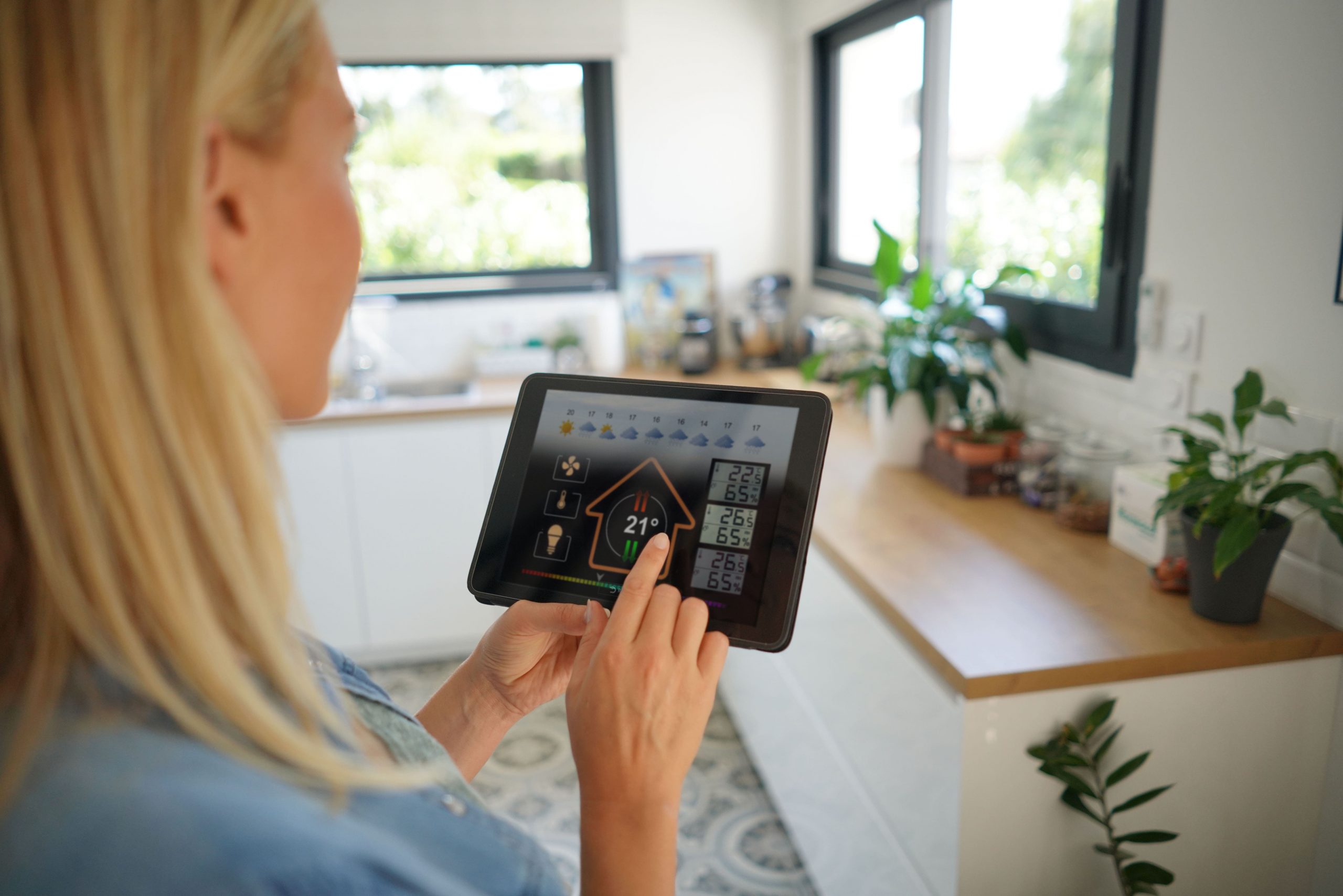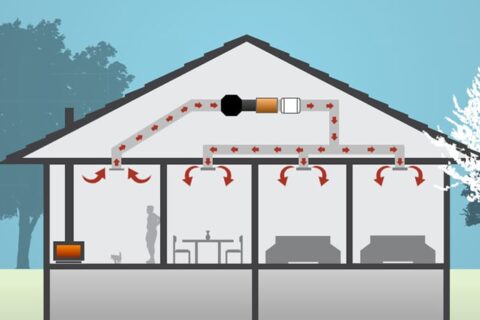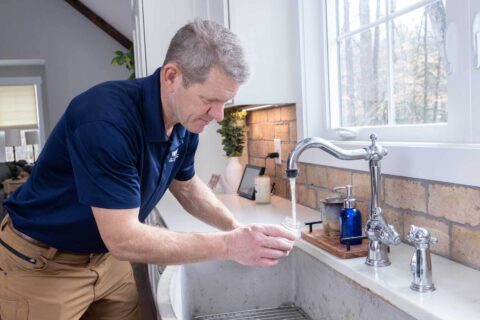Advanced Thermostat Programming Strategies for Enhanced Efficiency and Comfort
Key Takeaways
-
Advanced thermostat programming strategies increase energy efficiency while improving comfort. They accomplish this by employing advanced features such as programmable schedules, zoning and seasonal adjustments. These techniques allow for accurate temperature regulation tailored to individual preferences and schedules.
-
Smart thermostats take advanced programming to the next level, incorporating learning algorithms, geofencing, and other automation that can save energy without complex programming. These intuitive tools learn users’ patterns and make temperature control easier.
-
Ongoing analysis and observation of user patterns lets you spot the most promising opportunities to save energy. Regularly reviewing energy reports, along with making informed, proactive adjustments will help save your organization substantial costs.
-
Things like seasonal adjustments and “away modes” are very important to getting the most efficiency. Taking proactive measures to adjust thermostat settings ahead of impending changes in weather or during periods of extended absence stops energy use before it happens.
-
Avoiding common traps, like making programming too complex or skipping routine maintenance, can go a long way in making sure thermostats are used effectively. Easy, straightforward user settings and regular maintenance go a long way toward ensuring long-lasting performance and energy savings.
-
Pairing smart features with manual adjustments provides flexibility and personalization. Teaching everyone in the household how to use the thermostat correctly promotes a team effort in keeping the home energy efficient and comfortable.
Delving into these more advanced thermostat programming strategies can lead to even greater energy efficiency, while still keeping your home a comfortable place to live. When you carefully adjust temperature settings and schedules, you save money on energy costs while maximizing HVAC system performance and efficiency.
These strategies are based on specific features commonly used in today’s smart thermostats. These involve zoning capabilities, adaptive learning, and climate-based programming. They offer better control over heating and cooling, maintaining comfort levels without wasting energy.
For instance, programming your thermostat to use different, more efficient temperatures while you’re at work or sleeping can produce big savings. Improved system performance is another significant benefit.
With advanced programming, you can avoid overuse and improve the performance of your system, helping it to last longer. Understanding these advanced techniques can help us all make the most positive impacts with energy use at home.
What Are Advanced Thermostat Programming Strategies
Advanced thermostat programming strategies go a step further by optimizing your temperature control to maximize energy efficiency while keeping your home just the way you like it. These strategies are more complex than basic changes or shortcuts, leveraging data, technology, and advanced features to maximize energy efficiency while keeping spaces comfortable.
They depend on accurate scheduling, adaptive recovery, and synergy with smart systems to deliver at full potential. When homeowners program their thermostats to fit their daily routine, they can enjoy comfort while using energy efficiently and saving money.
Benefits of Advanced Programming
Advanced programming of a programmable thermostat provides tangible energy savings by minimizing heating or cooling when not needed. For example, you can set a thermostat schedule for cooler temperatures on winter nights. In the summer, raising the temperature in the afternoons when the house is empty can save you 10-20% on your energy bills.
Improved comfort is the second most cited benefit of effective thermostat programming. Adaptive recovery technology adapts to the heating and cooling needs of your home, ensuring that when you wake up or return home, the indoor temperature is just right. This customization not only enhances occupants’ comfort but also lowers strain on HVAC systems, thus reducing maintenance costs.
Automated adjustments make daily routines more convenient, allowing the smart wifi thermostat to automatically adjust without extra effort, providing optimal comfort and efficiency in your home environment.
Features of Smart Thermostats for Programming
Smart thermostats enhance advanced programming with tools like voice control. This gives you the power to make really easy adjustments with voice assistants like Alexa or Google Assistant.
With remote access through smartphone apps, you can control your settings from anywhere — whether you’re at the office or on a beach toting a piña colada. Smart home integration allows your thermostat and other devices to work together seamlessly, ensuring the best energy savings and comfort.
How Advanced Strategies Save Energy
Temperature setbacks during unoccupied hours save energy by reducing the amount of heating or cooling needed. Advanced programming programmable schedules help cut out wasted energy, and with geofencing, your system will always make the right adjustments no matter where you are.
Ongoing monitoring of energy consumption can help to isolate additional opportunities for savings that may exist. According to the EPA, smart thermostats could save millions in energy costs and reduce greenhouse gas emissions significantly.
How to Program Thermostats Effectively
Understand Your Thermostat Settings
Each thermostat is equipped with different options, and knowing your options is the first step in successful thermostat programming. Most models have programmable heating, cooling, and fan modes, as well as multiple programmable schedules.
Spend some time getting to know your specific model’s manual or app, as features can differ considerably. Some advanced thermostats even provide geofencing or energy reports.
Understanding these features will help you minimize energy use and customize your setup to your day-to-day schedule. Making it a point to regularly go back to those settings and adjust them keeps them from getting stale—like when seasons change or your household schedule changes.
Set Schedules for Maximum Efficiency
Efficient schedules can save up to 10-30% on energy costs. When night comes, or you leave the house – change the thermostat.
In the winter, lower the temp 7-10°F, or raise it this much in the summer. Turn the thermostat down from 68°F to 60°F on winter nights. This easy adjustment saves energy and can help you stay warm snuggled beneath your comforter.
At home during the daylight hours, aim for 68°F—a good mix of comfort and efficiency. Set it back to save—higher in summer, lower in winter. Consistent reprogramming of the schedule as work and school schedules change in this new normal will help save money on a consistent basis.
Adjust Temperatures Based on Seasons
Proper seasonal adjustments are key to keeping you comfortable and saving energy. During the summer months, keep the thermostat at 78°F when home and higher when away.
In winter, target about 68°F when you’re home and in bed, with a goal of 60°F when you’re out or asleep. After all, outdoor temperatures have a direct effect on your indoor comfort.
Simple tactics such as closing window blinds to keep out summer sun or sealing winter drafts can drastically improve your home’s energy efficiency.
Use Zoning for Better Comfort
Zoning splits your property up into sections with their own temperature settings. This approach is particularly effective in multi-story homes or homes with rooms that have different usage patterns.
For instance, you might want to set keeping living areas at 68°F in the evening while bedrooms are allowed to be cooler. Most larger homes have at least two thermostats—or better yet, smart zoning systems—for more exacting control.
This configuration maximizes comfort in the spaces you occupy and saves energy in the spaces you don’t.
Optimize Away Modes for Savings
Away modes make energy savings when you’re not home easy. Setback – Raise the temperature 7-10°F in summer or lower it in winter.
You’ll save about 10% on your annual heating and cooling bills! Most modern thermostats feature vacation modes for longer trips, keeping settings low while ensuring no energy is wasted.
When you return, most systems can automatically go back to comfortable settings, so you won’t even notice the switch.
Essential Steps for Programming Your Thermostat
-
Enter the programming menu and select the day and time you wish to set a new program.
-
Programmers do set a specific temperature for each programmed time, such as for morning and night.
-
Save the settings to ensure they’re applied correctly.
Simple regular maintenance, such as changing or cleaning filters and avoiding sources of heat, will keep it running at maximum efficiency.
Ceiling fans and curtains work with your thermostat to reduce cooling needs. Summer ceiling fans cool more efficiently with ceiling fans and your thermostat.
Little adjustments such as these go a long way, keeping your home cozier and your energy costs easier.

Advanced Techniques for Smart Thermostats
1. Use Learning Capabilities Effectively
Smart thermostats that learn your schedule deliver convenience like never before. These devices learn your settings and routine patterns to help them find out what you like and when. After a while, they learn and adjust settings for you, automatically optimizing energy use and comfort.
For instance, if you like it cooler at night, the thermostat will learn that behavior and do it automatically without having to do it yourself. Giving the thermostat time to figure out your habits is critical. Give it a little time, as it usually only takes a few weeks for the system to completely adjust.
To get the most out of these features, set a schedule and stick to it during the learning period. This allows the thermostat to learn your patterns more quickly. Most models calculate the cost of the home’s outdoor temperatures or weather shifts, keeping it cozy and safe without overusing energy.
2. Integrate with Home Automation Systems
Completely integrating smart thermostats into larger home automation networks can better realize their potential. When smart thermostats are connected with other smart devices, such as smart light bulbs or smart door sensors, they can create a coordinated energy strategy.
For example, a connected thermostat might coordinate with other motion sensors around the house and stop heating or cooling when no one is home. Controlling everything from one app streamlines your experience, making control as easy as possible.
Exploring other compatible products like smart plugs or voice assistants can unlock additional automation and maximize energy savings even more.
3. Monitor and Analyze Usage Patterns
By reviewing usage patterns, you can find ways to optimize thermostat performance. Many smart thermostats come with monthly energy reports, illustrating how small changes to your habits will save energy and money.
If heating is spiking during unoccupied hours, you can adjust the schedule to remedy this. Regular monitoring and small tweaks based on trends can cut HVAC energy use by up to 15%, reducing bills and environmental impact.
4. Enable Geofencing for Temperature Control
Geofencing automatically modifies thermostat settings based on your location. When you depart from home, the thermostat turns down energy use, and it brings comfort back as you come home.
When used in conjunction with occupancy sensors, geofencing stops waste in its tracks and optimizes the system’s efficiency. Having your app set these boundaries makes for easy transitions without any user input needed.
5. Customize Alerts and Notifications
Custom alerts prevent costly damage and keep your system running at peak efficiency. Some will send you notifications to alert you when it’s time to perform maintenance, such as changing filters, or when a drastic temperature change occurs.
Alerts are an early warning system for potentially bigger problems, saving expensive repairs later on. Establishing these features fortifies energy management, saving more energy over the long haul.
Common Mistakes to Avoid
Overcomplicating the Programming Process
Simplicity is the name of the game when programming your thermostat. When complicated programming is confusing, your HVAC system is much less likely to operate effectively. We know that setting a different temperature for each hour of the day is a lot more efficient.
This construction produces significant energy waste due to frequent over-compensation. Rather, begin with setting the stage with fundamentals – such as keeping day and night time temperatures stable. Common mistakes to avoid takeaways include programming your thermostat to reduce heating by 10°F at night or during the day while you are out of the house.
This easy action saves America’s families an average of 10% on their heating bills. Only add the fancy features once you’re confident with the fundamentals.
Ignoring Seasonal Adjustments
Thermostats must retune when seasons shift. Failure to address this can double or triple energy bills. In the winter months, try to maintain a house temperature of 68°F while you’re home.
You can lower it at night for extra comfort. During summer, make sure that the cooling settings you have match the temperature outside and don’t waste energy cooling when it’s not needed. Continue to monitor weather forecasts daily and adapt as needed.
Adjusting your thermostat to meet your needs in each season keeps you comfortable and saves money all year long.
Not Utilizing Smart Features Fully
Most programmable thermostats have smart features such as learning temperature preferences and/or remote access, but these features go unused. Smart features such as geofencing can help you save energy by automatically adjusting your home’s temperature when you leave.
Take time to familiarize yourself with settings such as these to get the most convenient and efficient experience. Keeping abreast of new technologies will help you make sure you’re getting the best performance possible out of your system.
Forgetting Regular Maintenance
Preventative maintenance is key to your equipment working at its best. Prevent inaccurate temperature readings. Cleaning sensors and recalibrating your smart thermostat ensures you aren’t wasting energy or being uncomfortable.
Regular maintenance can help prolong the life of your HVAC system. Install your thermostat at least 5 feet high for the most accurate temperature readings.
Never forget that this is a machine and should be treated as such.
Tips to Maximize Efficiency and Comfort
Combine Smart Features with Manual Adjustments
Combining smart technology with manual control provides a more balanced approach to keeping your home comfortable while saving energy. Smart thermostats go a step further by offering features such as geofencing, which will automatically adjust the temperature depending on where you are. For instance, the system can reduce heating while you’re gone and bring the house back to a comfortable temperature upon your return.
Operations, manual adjustments are equally important. When an unseasonably warm day does hit this winter, being able to manually lower the heat will help save energy. If you prefer a cooler setting when entertaining guests, manual control allows you to quickly change it to your preferred settings.
This is important so you don’t throw off your programmed schedules. After all, staying engaged with your thermostat’s settings will help make sure your smart system is working with your busy lifestyle, giving you convenience and customized comfort.
Regularly Update Thermostat Software
It’s important to note that regularly updating your thermostat software is essential for keeping your smart thermostat running at peak performance. Upgrades usually come with new energy management capabilities, advanced security protections or other new features such as broader scheduling options.
For example, a firmware update might help geofencing better understand your movements, so it can make more accurate temperature changes. Checking for updates monthly and enabling automatic updates ensures you benefit from the latest improvements.
This approach results in greater energy efficiency and increased comfort through powerful new tools that make climate management easier.
Educate All Household Members
This is because awareness among all the members of the home greatly increases energy saving potential. Keep your summer thermostat at 78°F while you’re home to stay comfortable and save energy. You can set your thermostat by one degree to save an average of 1% off your energy bill!
Communicate daily routines and personal preferences to come up with a mutual schedule. For instance, draw shades at night during the winter to keep warmth in or shutter them during summer afternoons to avert heat gain.
A common understanding creates greater comfort and allows for less energy waste.
Conclusion
Maximizing the value of your thermostat really is all about strategic programming and minor tweaks. It’s the smart strategies that will have the most tangible impact on comfort, energy use, and cost. Creating a schedule that matches your lifestyle conserves energy and helps everything run more efficiently. Taking advantage of advanced features such as learning modes or zoning options brings even more control and comfort.
Avoid making mistakes by being diligent and reviewing your programming settings. Even simple steps like these can save on energy costs and create a more efficient space without requiring more work.
Give advanced thermostat programming strategies a whirl today and experience the positive impact for yourself. Some simple adjustments today will result in a more comfortable home and reduced costs year-round.
Frequently Asked Questions
What are advanced thermostat programming strategies?
Advanced programming strategies, such as effective thermostat programming, allow you to set custom thermostat schedules that fit your day-to-day life. You’ll save even more energy if you use temperature setbacks when you’re away and utilize a smart wifi thermostat with learning algorithms, which both reduce energy use and enhance home comfort.
How can I program my thermostat to save the most energy?
To achieve optimal energy efficiency, schedule your programmable thermostat to reduce the temperature by 7–10°F while you’re sleeping or out of the house. The Department of Energy recommends maintaining this thermostat schedule for at least 8 hours daily to save up to 10% per year on heating and cooling costs.
Do smart thermostats require professional installation?
Unlike advanced thermostat programming strategies, nearly all smart wifi thermostats are sold as DIY products. If you’re unfamiliar with your HVAC system or wiring, it’s best to hire a professional for effective thermostat programming to ensure optimal performance.
What common mistakes should I avoid when programming my thermostat?
To achieve optimal comfort and minimize energy consumption, use a comfortable setpoint with your programmable thermostat. Always focus on effective thermostat programming and maintenance, reprogramming when the seasons change to avoid wasting energy and lowering efficiency.
Can smart thermostats work with older HVAC systems?
Typically, yes—all smart wifi thermostats work with legacy systems. Verify that the model thermostat you want to purchase will support effective thermostat programming and function as desired.
How often should I update my thermostat’s schedule?
Take some time at the beginning of each season to review and update your thermostat schedule. This way, your effective thermostat programming adapts to changing weather and household routines, maximizing energy efficiency while ensuring optimal comfort.
What are the benefits of geofencing in smart thermostats?
Geofencing automatically adjusts your home’s temperature setting based on your location. This effective thermostat programming saves energy by reducing heating or cooling when you’re away, ensuring optimal comfort upon your return, making it both convenient and energy-efficient.


